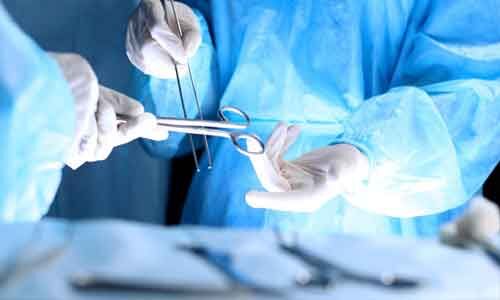- Home
- Medical news & Guidelines
- Anesthesiology
- Cardiology and CTVS
- Critical Care
- Dentistry
- Dermatology
- Diabetes and Endocrinology
- ENT
- Gastroenterology
- Medicine
- Nephrology
- Neurology
- Obstretics-Gynaecology
- Oncology
- Ophthalmology
- Orthopaedics
- Pediatrics-Neonatology
- Psychiatry
- Pulmonology
- Radiology
- Surgery
- Urology
- Laboratory Medicine
- Diet
- Nursing
- Paramedical
- Physiotherapy
- Health news
- Fact Check
- Bone Health Fact Check
- Brain Health Fact Check
- Cancer Related Fact Check
- Child Care Fact Check
- Dental and oral health fact check
- Diabetes and metabolic health fact check
- Diet and Nutrition Fact Check
- Eye and ENT Care Fact Check
- Fitness fact check
- Gut health fact check
- Heart health fact check
- Kidney health fact check
- Medical education fact check
- Men's health fact check
- Respiratory fact check
- Skin and hair care fact check
- Vaccine and Immunization fact check
- Women's health fact check
- AYUSH
- State News
- Andaman and Nicobar Islands
- Andhra Pradesh
- Arunachal Pradesh
- Assam
- Bihar
- Chandigarh
- Chattisgarh
- Dadra and Nagar Haveli
- Daman and Diu
- Delhi
- Goa
- Gujarat
- Haryana
- Himachal Pradesh
- Jammu & Kashmir
- Jharkhand
- Karnataka
- Kerala
- Ladakh
- Lakshadweep
- Madhya Pradesh
- Maharashtra
- Manipur
- Meghalaya
- Mizoram
- Nagaland
- Odisha
- Puducherry
- Punjab
- Rajasthan
- Sikkim
- Tamil Nadu
- Telangana
- Tripura
- Uttar Pradesh
- Uttrakhand
- West Bengal
- Medical Education
- Industry
Absorbable suture as good as permanent suture in uterosacral ligament suspension

A recent study has reported that due to similar surgical results, less suture exposure/erosion, and less suture removal, absorbable suture( AS) is as effective as a permanent suture( PS) in the surgical procedure of vaginal prolapse. Absorbable sutures were even reported to show a better safety profile.
Findings have been published in Neurourology and Urodynamics.
Uterosacral ligament suspension (USLS) is a common, native‐tissue vaginal surgical procedure for the correction of Apical vaginal prolapse (AVP).
Absorbable synthetic sutures are composed of chemical polymers that are absorbed by hydrolysis and cause a lesser degree of tissue reaction after placement. Nonabsorbable sutures will need to be removed by the doctor at a later date or in some cases left permanently.
There has been a controversy among surgeons regarding the pros and cons of absorbable vs permanent sutures, especially in USLS surgery.
Liao Peng et al at the Department of Urology, West China Hospital, China undertook the study to compare surgical results and suture‐ related complications after uterosacral ligament suspension (USLS) with absorbable suture (AS) vs permanent suture (PS).
The study design consisted of data collection from systematically searched PubMed, Embase, clinicalTrial.gov, and Cochrane Library Central Register of Controlled Trials for articles that compared AS with PS for USLS. Inclusion criteria were constructed according to PICO principle: (a) population: adult women suffering from AVP underwent USLS; (b) Intervention: USLS; (c) comparator.
The primary outcomes were surgical success rate and suture‐related complications (suture exposure/erosion and suture removal)
On analysis, the following key fact emerged.
- Four articles involving 647 patients were eventually included.
- Findings demonstrated that AS had a similar surgical success rate in comparison with PS (RR = 1.00; 95% CI, 0.94‐1.06) and that no significant differences in anatomic failure rates were noted between two groups (RR = 1.10; 95% CI, 0.65‐1.86).
- Subgroup analyses in anatomic failure revealed no statistical differences in apical prolapse ≥1/2 TVL (RR = 0.92; 95% CI, 0.48‐1.75), recurrent prolapse beyond the hymen (RR = 1.18; 95% CI, 0.68‐2.04), as well as in recurrent anterior, posterior or apical prolapse (P = .14, P = .08, P = .09, respectively).
- However, AS group indicated a lower risk in suture exposure/ erosion (RR = 0.31; 95% CI, 0.15‐0.63) and lower suture removal rate (RR = 0.35; 95% CI, 0.18‐0.67).
"Unfortunately, there were no data on the cost-effectiveness and the learning curve between two suture materials. Further research is required to shed a light on these issues." said the research
For the full article, click the link: https://doi.org/10.1002/nau.24434
Primary source: Neurourology and Urodynamics
Dr Satabdi Saha (BDS, MDS) is a practicing pediatric dentist with a keen interest in new medical researches and updates. She has completed her BDS from North Bengal Dental College ,Darjeeling. Then she went on to secure an ALL INDIA NEET PG rank and completed her MDS from the first dental college in the country – Dr R. Ahmed Dental College and Hospital. She is currently attached to The Marwari Relief Society Hospital as a consultant along with private practice of 2 years. She has published scientific papers in national and international journals. Her strong passion of sharing knowledge with the medical fraternity has motivated her to be a part of Medical Dialogues.
Dr Kamal Kant Kohli-MBBS, DTCD- a chest specialist with more than 30 years of practice and a flair for writing clinical articles, Dr Kamal Kant Kohli joined Medical Dialogues as a Chief Editor of Medical News. Besides writing articles, as an editor, he proofreads and verifies all the medical content published on Medical Dialogues including those coming from journals, studies,medical conferences,guidelines etc. Email: drkohli@medicaldialogues.in. Contact no. 011-43720751


